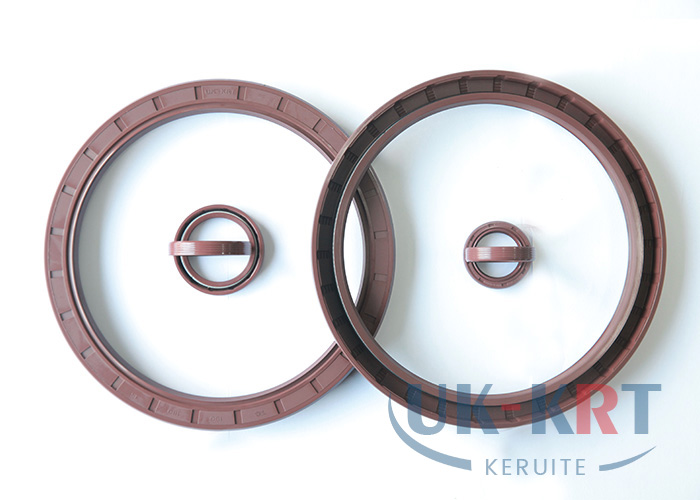(TC, TB, TA) Inner skeleton oil seal, exposed skeleton oil seal
(TC, TB, TA) Inner skeleton oil seal with exposed skeleton oil seal, skeleton oil seal can be divided into single lip skeleton oil seal (SC, SB, SA) according to structure form, double lip skeleton oil seal (TC, TB, TA), according to skeleton type can be divided It is an inner skeleton oil seal (TC, SC), an exposed skeleton oil seal (TA, TB, SB, SA), a non-skeleton oil seal and a fabricated oil seal. The skeleton oil seal is divided into: fluorine rubber FKM skeleton oil seal, nitrile rubber NBR skeleton Oil seal, PTFE skeleton oil seal, polyurethane PU oil seal, etc.
Skeleton oil seals are used to seal engine crankshafts and camshafts for transmission systems (such as gearboxes, wheel hubs, axle shafts, differentials) of cars, motorcycles and commercial vehicles, and for the transmission of agricultural machinery and construction machinery such as excavators. System sealing. Sealing of industrial gearboxes. Sealing of hydraulic components (pumps, motors). Sealing of household machinery washing machines. Skeleton oil seals are widely used in mechanical engineering and equipment processing industries.
The outside of the oil seal is cylindrical to ensure the static sealing of the cavity-the outer edge of the rubber with a metal skeleton inside is adopted; the outer edge of the exposed metal skeleton is mostly required to be polished and plated with anticorrosive coating. The spring-mounted sealing lip ensures the sealing reliability of the dynamic and static sealing of the shaft. As a result of long-term development and research, the sealing lip structure of the oil seal has been improved to excellent performance, thereby improving the reliability of the seal in a wider load range. Adding dust lip, or adopting multiple dust lip under special circumstances, It can prevent the intrusion of external pollutants and dust.
The sealing state of the oil seal is that the outer edge of the oil seal and the cavity are statically sealed, and at the same time, the reliable positioning of the outer edge of the oil seal between the cavity is ensured. The second is the sealing state between the oil seal lip and the shaft. When the shaft rotates, it is a dynamic seal, and when the shaft is stationary, it is a static seal. The comprehensive action and interaction of various influencing factors have a great influence on the sealing performance and service life of the skeleton oil seal.
Temperature range: -60℃~225℃, the high temperature of special silicone rubber can reach 300℃, and the low temperature can reach -100℃. (TR10 can be at -100℃)
Hardness range: Shore A 25 degrees to 90 degrees.
